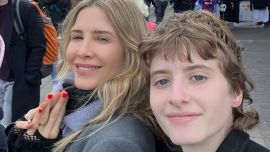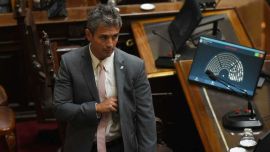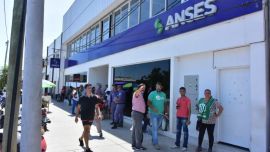For over two centuries – since the famous Hundred Days between Napoleon Bonaparte’s return to France and his final defeat at Waterloo in 1815 (actually 110 days, but let’s put that aside for now) – 100 days has been a pet period of assessment in various spheres, especially for new governments. Today will be the 100th day of Argentina’s coronavirus quarantine since its start on March 20 (as it happens, also the date of Napoleon’s return to power in Paris in 1815).
The big difference with the original Hundred Days is that today will not see any Waterloo bringing lockdown to an end, rather the contrary. When 100 days of the first positive test for Covid-19 in Argentina (March 3) was marked, there was a death every 200 minutes and a fresh contagion every 70 seconds – little over a fortnight later, the pandemic has escalated to a death every 40 minutes and a new positive case every 35 seconds, according to midweek figures. They are figures that now point to a tighter quarantine despite the very palpable economic damage of lockdown that is already beginning to appear.
Yet speculating about the future is not the purpose of this article, rather to look back on the 100 days with a timeline. But first the build-up as from March 3, when somebody called Ariel (identities have been protected throughout quarantine, unless consent is given, to prevent undue stigmatisation of families and others associated) tested positive for Covid-19 upon arrival from Milan, thus confounding Health Minister Ginés González García’s disbelief in any coronavirus during summer – at that stage only Brazil, Chile and Ecuador had already reported cases within Latin America.
Eight cases by the first weekend mushroomed to 79 within a fortnight with the first two deaths but all “imported” – on March 12 flights from pandemic countries were banned (all frontiers closed three days later) with a national sanitary emergency declared. At that stage the virus had penetrated six provinces, invading a further 12 in the next 10 days. Argentina’s brief flirtation with “herd immunity” in the form of still allowing schools to remain open lasted just three days with classes suspended on March 15 (when the watchword “stay home” was born). Finally, the first multi-billion social programmes anticipating lockdown were announced two days beforehand. Balcony applause for health workers began the same day.
FIRST PERIOD (March 20 - April 12)
This period comprises two stages, initially until the end of March but then extended to Easter Sunday (April 12) in the last weekend of the month. This first phase was quite simply nationwide and total lockdown with only essential services like the sale of food and medicine permitted. Only health workers and the security forces were allowed to work beyond home (i.e. only around 10 percent of the population mobile) while only urban transport is permitted, stranding thousands of Argentines both at home and abroad.
At that stage Covid-19 had already reached every province except Catamarca, Chubut, Formosa and La Pampa with no less than nine provincial governments imposing quarantine ahead of the national.
Some highlights from that period:
March 23 (Day 4). The IFE emergency family benefit of a monthly 10,000 pesos to the jobless, informally employed and other vulnerable sectors is born.
M24 (Day 5). Argentines are forced to remember the 1976 coup anniversary from their balconies and via social networks while La Pampa reports its first case.
M26 (Day 7). Frontier closure is also extended to Argentine citizens who thereafter can only return in strictly limited flights to Ezeiza airport.
M27 (Day 8). A death toll reaching 17 includes the first member of the medical profession, a Río Negro doctor, while worldwide Covid-19 reaches the top in the person of Britain’s Prime Minister Boris Johnson among half a million infected.
M30 (Day 11). Saucepan-bashing in a fruitless bid to induce politicians to cut their salaries in solidarity sets the tone for the week.
M31 (Day 12). Two of the day’s three fatalities in a death toll now reaching 27 are doctors, causing alarm, with the total of cases reaching four digits as the month closes. A government decree bans any dismissals until June.
April 1 (Day 13). The government issues Decree 332/2020 to provide ATP wage assistance to pay half of private-sector salaries up to two minimum wages, renewing this relief in subsequent months.
A2 (Day 14). The 38th anniversary of the 1982 South Atlantic war and the 61st birthday of President Alberto Fernández sees the worldwide total of coronavirus cases enter seven digits while here it is the day of the most widespread contagion, reaching a record 15 of the 23 provinces (132 cases).
A3 (Day 15). A chaotic and dangerous congestion inside and outside banks with pensioners (the leading risk group) and IFE beneficiaries collecting on the same day in their thousands. The government confirms plans for a gradual and staggered exit from lockdown after Easter in response to pressures from business and trade union leaders.
A7 (Day 19). A scandal around overpriced food purchases by the Social Development Ministry erupts. The first death in a retirement home is registered.
A8 (Day 20). President Fernández confirms tighter metropolitan and urban controls in the next phase of lockdown while relaxing elsewhere. Judge Víctor Violini rules a collective habeas corpus on behalf of convicts in risk groups in overcrowded prisons, triggering widespread public unrest towards the end of the month.
A10 (Day 22). On a Good Friday which sees the global death toll enter six digits (83 in Argentina) President Fernández announces a “managed quarantine” period until April 26.
SECOND PERIOD (April 13-26)
The new phase of quarantine relaxes lockdown for some sectors (especially banking in the light of the April 2 chaos) and in some places with greater discretion for local authorities, always leaving the last word with the national government. Around a quarter of the population is now mobile.
A15 (Day 27). The face of coronavirus becomes half-masked in public in this city as the barbijo becomes compulsory for shopping and public transport (already obligatory in half a dozen provinces prior to Easter). Chubut has its first case.
A17 (Day 29). City Hall attempts to tighten controls yet further by forbidding all senior citizens aged over 70 to leave home without a special permit. Reaction is strong and the government is unable to make this restriction stick.
A18 (Day 30). A Campana prison guard tests positive for coronavirus, thus increasing the pressures for compassionate leave or house arrest both in and beyond prisons with jail mutinies becoming widespread as from April 24.
A20 (Day 32). Online sales, bank withdrawals and deposits (within currency control limits), medical consultations, insurance and registry offices are all freed from quarantine.
A21 (Day 33). Covid-19 strikes at three prime risk groups: two cases reported in Villa 31 shantytown (thus confirming the shift away from European travellers to more vulnerable sectors), the first retirement home in this capital evacuated with over 20 senior citizens infected and a mutiny in Villa Devoto federal penitentiary. Television impresario Marcelo Tinelli makes a controversial trip to Patagonian Esquel in violation of quarantine.
A23 (Day 35). The spate of Covid-19 deaths in retirement homes prompts City Hall to order a general audit while Buenos Aires Province reports that health workers account for 20 percent of the infected. But the two districts still only total around two-thirds of the cases in Argentina as against well over 90 percent currently while in Chaco the situation is spinning out of control.
A25 (Day 37). President Fernández announces a third extension of quarantine until May 10 (although he forgets to specify the date) with the accent now falling on geographic rather than sectorial segmentation as far as exceptions go with nine inland provinces permitted public works and private construction, of which six may also renew professional activities – mobility now rises to around half the population. Apart from the date confusion is also created by failure to clarify that hourly weekend outings for children did not apply to cities with over half a million people. The sale of flight tickets before September 1 is forbidden.
A26 (Day 38). Argentine Ambassador to Ireland Laura Bernal, 64, dies of coronavirus in Dublin. She is honoured with a special service in Foxford, County Mayo, the birthplace of Admiral William Brown (founder of the Argentine Navy).
THIRD PERIOD (April 27-May 10)
A28 (Day 40). The Rural Society postpones its traditional winter Palermo farm exhibition until October.
A29 (Day 41). President Fernández fires ANSES social security administration chief Alejandro Vanoli for the April 3 bank congestion and queuing, replacing him with La Cámpora’s Fernanda Raverta.
A30 (Day 42). Public protests against prisoner releases escalating all week reach a crescendo with saucepan-bashing in the evening. City Hall confirms shantytown cases of Covid-19 reaching 124 in just over a week, raising new fears.
Mat 1 (Day 43). May Day (obviously without the traditional worker rallies) sees City Hall extending the compulsory use of face-masks to all public appearances as from M4.
M5 (Day 47). Aerolíneas Argentinas and Austral announce a merger in the face of the aviation crisis caused by global pandemic.
May 6 (Day 48). Doctors ask the general public to discontinue the evening applause from balconies in favour of pushing for better pay and conditions for them.
M7 (Day 49). A locally produced serological test to supplement the international PCR method is announced, broadening the scope for testing. Education Minister Nicolás Trotta confirms that there will be no school classes until there is a vaccine against coronavirus. Another retirement home scare as dozens of senior citizens are evacuated from Recoleta’s Carpe Diem.
M8 (Day 50). Midway through these 100 days President Fernández extends quarantine for another fortnight, giving the new phase the heading of “progressive re-opening” with increased scope for local discretion – for the first time in seven weeks the metropolitan area shares with inland provinces and rural areas as City shops and Greater Buenos Aires areas re-open. Mobility now climbs to around three-quarters of the population. On the same day a daily record of 240 new cases of coronavirus is posted with the death toll on the brink of 300.
FOURTH PERIOD (May 11-24)
M11 (Day 53). The Buenos Aires provincial supreme court overturns Violini’s habeas corpus and asks judges to review all prison releases in response to public outcry. On Monday City traffic increases 29 percent with the partial reopening of economic activities in the metropolitan area.
M13 (Day 55). More than 10 weeks after President Fernández opened the ordinary sessions of Congress for 2020, the Senate finally starts work for the year, followed by the Chamber of Deputies the next day – online, of course, for a historical first after various glitches.
M15 (Day 57). The first nationally produced PCR test for identifying the infected is announced.
M17 (Day 59). Villa 31 activist Ramona Medina, 42, dies of coronavirus, sparking outrage in the community and beyond. City Hall finally permits outings for children after almost two months.
M18 (Day 60). The government extends the layoff ban for a further two months.
M22 (Day 64). Argentina’s total of Covid-19 cases enters five digits as South America as a whole starts becoming the epicentre of coronavirus globally.
M23 (Day 65). Saying quarantine will last “as long as it has to,” President Fernández extends it for another fortnight under the title of the “new normality.”
M24 (Day 66). Buenos Aires Province Governor Axel Kicillof, showing increasing anxiety to tighten quarantine unlike City Mayor Horacio Rodríguez Larreta, seals off Villa Azul for the next fortnight after over 50 cases of coronavirus are reported there, ringing the shantytown with 1,000 policemen.
FIFTH PERIOD (May 25-June 7)
Announced the day after coronavirus figures hit five digits, the “new normality” tightens restrictions in Buenos Aires City and Province with more traffic controls while limiting shops to “essential services,” thus forcing up to 25,000 re-opened businesses to close again. But inland over half the provinces are in the third or fourth phases of quarantine after no cases in a fortnight.
M25 (Day 67). The public holiday marking the birth of Argentine nationhood sees the first significant anti-lockdown protests downtown and in Tigre. An Orthodox Jewish wedding in Once with 150 guests is busted for violating quarantine with eight arrests.
M27 (Day 69). Doctor demonstrate downtown for better pay and protective equipment. Health Minister González García enters hospital for a health scare which has nothing to do with Covid-19.
M28 (Day 70). City Hall Cabinet Chief Felipe Miguel anticipates the quarantine could last another 10 weeks and reports that fully half of the infected in his jurisdiction are shantytown residents, a far cry from the travellers to Europe of the early days. Nationwide the occupancy of intensive care beds is already a third, a worrying level if winter brings a compound multiplication of cases.
M29 (Day 71). A baby shower in Necochea ends up infecting over 20 people (including mother and future child) with coronavirus, relegating the Atlantic resort back to the first phase of quarantine.
June 1 (Day 74). IFE emergency family benefits are renewed for this month.
J3 (Day 76). Two deaths in Villa Azul add to Kicillof’s misgivings about flexibility. For the first time in five years there is no Ni Una Menos march with femicides repudiated via social networks instead.
J4 (Day 77) President Fernández, flanked by Kiciloff and Rodríguez Larreta as always, ensures the arrival of quarantine into three digits today by extending it three weeks instead of a fortnight while subdividing it – to the original regime of compulsory, preventive social isolation (APSO in its Spanish acronym) is now added the newly coined preventive social distancing (DIPSO) reigning in 85 percent of the country. Even APSO now permits the reopening of garment and footwear shops, jogging and weekend outings for children in the Federal Capital. On the same day the Necochea baby shower infant is born – with Covid-19 but well.
J6 (Day 79). Subdued for many weeks, the 9 de Julio thoroughfare is the scene of a significant protest against quarantine.
SIXTH PERIOD (June 7-28)
J8 (Day 81). Villa Azul re-opened.
J9 (Day 82). Formosa confirms its first case (in fact 25 cases all at once), leaving Catamarca as the only coronavirus-free province.
J10 (Day 83). With four-digit totals of coronavirus cases now a daily influx, President Fernández hints strongly at a return to square one in quarantine, also expressing irritation over the number of nightly joggers in City parks.
J11 (Day 84). Covid-19 moves north with Tigre as its new Greater Buenos Aires epicentre (almost 100 cases).
J12 (Day 85). Coronavirus moves back south in Greater Buenos Aires with Lomas de Zamora Martín Insaurralde the first senior politician to test positive.
J15 (Day 88). Chaco reverts to the first and strictest version of quarantine as its death toll reaches 73.
J16 (Day 89). An even bigger political name than Insaurralde joins the sick list as former Buenos Aires Province governor María Eugenia Vidal tests positive.
J18 (Day 91). A record daily death toll of 35 sends the alarm-bells ringing even more furiously, especially with hospital bed occupancy approaching 60 percent before winter has even begun with collapse within two months feared.
J19 (Day 92). Less than fortnight after entering four digits, the total of Covid-19 infections in a day already tops 2,000.
J21 (Day 94). Father’s Day and the first day of winter sees Argentina crossing the threshold of 1,000 deaths.
J26 (Day 99). President Fernández announces an extension of the quarantine period in the Buenos Aires metropolitan area, with restrictions on exercise outings tightened in the City. Officials warn the peak is coming and that the health service must be protected. The messaging is clear, with the president appealing to Argentines to respect the new rules.
J27 (Day 100). Good morning!


























Comments